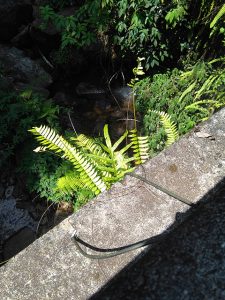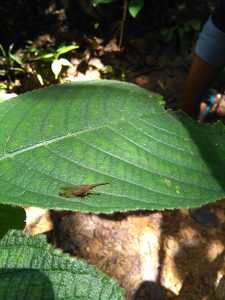One of the memorable day added to our undergraduate life was our 3rd field visit for the first year.It was arranged by the Department of Plant Sciences and scheduled to the Sinharaja forest reserve on 28th of October,2017. It was the first field visit we took part with the Department of Plant Sciences, as we have already been on two other field visits with the Department of Zoology and Environment Science.

Sinharaja forest spreads through 3 different districts; Matara ,Galle and Ratnapura.
We entered the forest through Kudawa village.
First we covered the trail of 4-5 km and then had the lunch within a resting area in the forest. Throughout the trail, we were able to identify different plants endemic and non endemic to Sri lanka as well as different plant groups like bryophytes,pterophytes etc, and the plant families which were the major intention of the trip.
Even though it was an educational field visit, the visit gave us an opportunity to appreciate the gift of nature in our own country.
The gift of nature and the ecological advantage it has gifted us with, when compared to other countries are appreciable.It’s one of the major tourist attraction points in Sri Lanka,which brings in a great source of income from both local and foreign tourists too.The woody trees contribute to the timber industry too.

Yes, all the above are discussed by any individual who visits a forest in a country as Sri Lanka. But how many, raise the question about the protection of such a world heritage?
Sinharaja with the western ghats is defined as one of the 25 biodiversity hotspots in the world. To be eligible as a hotspot, it should consist of 1500 species of endemic vascular plants and 70% of its natural biota should have been lost. The word hotspot makes us feel proud on what we posess but never questioned us how do we protect it?
“The wildlife conservation department works on it” is the easiest answer.
Still, the scenery there showed us that there is a rapid rate of human invasion around the Sinharaja margin by the side of Kudawa village. The current village development projects will bring more and more human settlements in the village which is so closer to the forest that will bring an immense effect on the forest too.
Its appreciable that village settlement reach such a remote area, where there weren’t mobile signals, still the mini tea estates, the residencies, and the immediate forest surroundings being cut down were alarming signals that in nearby future we will not be able to pass down the nature to our next generation.
As in other countries, Sri Lanka too should hold some valid policies in protecting the forest reserve than this. Even if there are, their implementation is questionable.
The areas immediately surrounding a valuable forest should always be protected areas they should never be allowed for settlements, which can eventually lead to the exploitation of the forest too.
We shall all think again when making advantage from the nature. Could we replace the harm we made to nature? It is better that we avoid exploiting it to an immense extent.

Whenever we make use of nature we should be responsible in paying the homage back to her,mother nature.
If we could never do pay back,better if we could refuse from using her resources!


